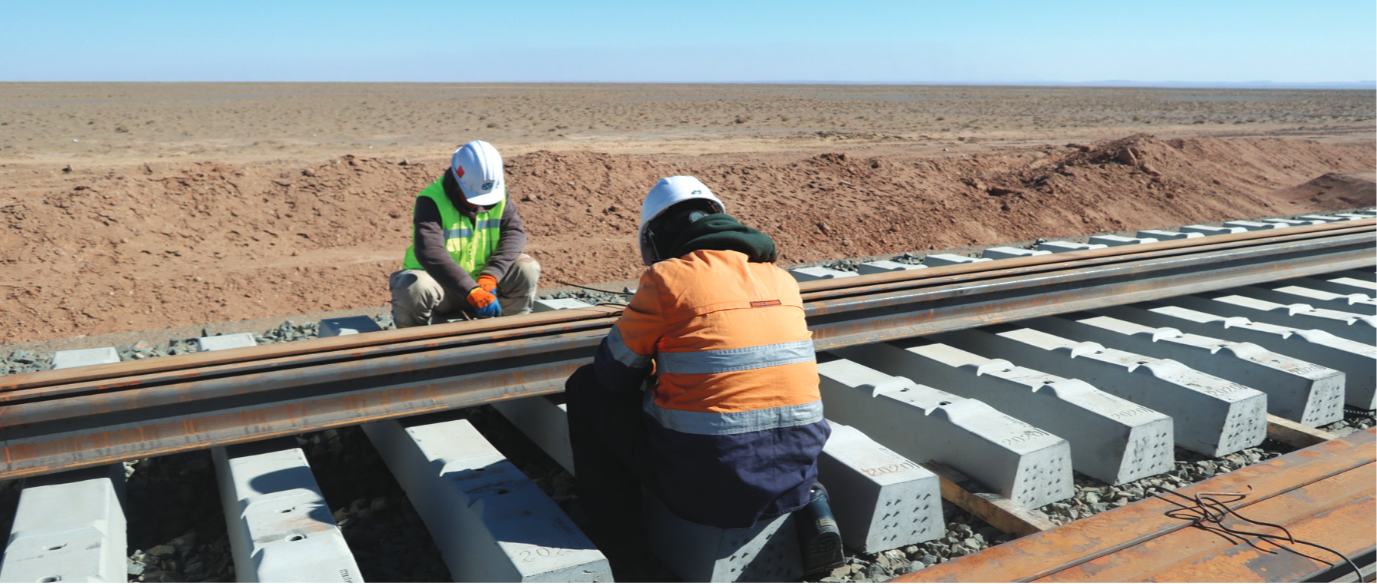
A. Khaliun
The draft resolution to establish a cooperation agreement between the governments of Mongolia and China regarding the Gashuunsukhait-Gantsmod cross-border railway, coal trade, and the expansion of the Tavan Tolgoi coal mine was discussed at the regular Government meeting on January 22. The Cabinet decided to consult with the relevant standing committee and craft a unified position on the matter.
The cooperation agreement seeks to promote long-term, sustainable economic growth for both countries, establish a coal purchase and sale agreement between state-owned entities based on mutual benefit and stable supply, and address all aspects related to coal production, export volumes, and the expansion of mining capacity at the Tavan Tolgoi deposit.
The joint construction of the Gashuunsukhait-Gantsmod cross-border railway bridge, stalled for 16 years, has been prioritized as the top project among 14 mega projects outlined in the Government's Action Program. The agreement between the governments of Mongolia and China was ratified in Shanghai last November during Prime Minister L. Oyun-Erdene's visit, and the activities specified in the agreement are now moving into the implementation phase.
The Working Group on the Gashuunsukhait- Gantsmod Railway Connection is led by the Minister of Industry and Mineral Resources, Ts. Tuvaan, on the Mongolian side. A similar group has also been established on the Chinese side. The two sides have met 60 times in the past, making steady progress and are now on the verge of beginning actual work.
The opportunity cost of the project, which has been stalled for 16 years, has been assessed by both Mongolia and China. The Ministry of Industry and Mineral Resources (MIMR) estimates that if the railway had been operational since 2015, it could have exported 232 million tons of coal, generating an additional $18.5 billion (63.8 trillion MNT) in revenue.
The Chinese side estimates the opportunity cost at 14 billion yuan. This includes 7.2 billion yuan for constructing a 300-kilometer railway to the Gashuunsukhait border crossing, 2.7 billion yuan in lost potential revenue due to the railway being unused for 10 years, and an additional 4 billion yuan required to expand the border terminal and build a narrow-gauge railway to the Mongolian border.
INVESTMENT TO BE RECOVERED IN 5.8 YEARS
What will be accomplished under the agreement between Mongolia and China on the joint construction of the Gashuunsukhait- Gantsmod cross-border railway bridge? The deal includes three main components: the construction of the railway, the establishment of a coal sale and purchase agreement, and the expansion of the mine's capacity. Resolving these three issues will ultimately bring the railway to fruition.
Minister of Industry and Mineral Resources, Ts. Tuvaan, stated that as of January 9, 2025, 99% of the terms of the Railway Agreement and 80% of the terms of the Coal Sale and Purchase Agreement have been finalized. The issue of mine capacity expansion is still under negotiation, with both parties actively working on it.
Let me clarify the issue regarding the name. The agreement specifies that the Gashuunsukhait and Gantsmod border crossings will be connected by railway. However, both parties are fully aware that a direct physical connection between the two points is not feasible. "Connecting" refers to the railways of both countries merging at a designated point.
In reality, there is a 300-meter gap between the narrow-gauge railway on the Chinese side and the border, while on the Mongolian side, there is a 10-kilometer distance from the broad-gauge railway to the border.
These two railways cannot be directly connected. Instead, a 1.4-kilometer bridge will be built, featuring both narrow and broad gauge tracks. The railways on each side will connect to the bridge, with each operating on Its respective gauge, allowing for the loading and unloading of cargo.
"The bridge will stand 28 meters high, with an underground foundation depth of 50-60 meters. Since we have no prior experience in constructing such a complex structure, both sides have agreed to entrust the project to a single company," said Minister of Roads and Transport, B. Delgersaikhan, conveying a statement from the state-owned China Energy Company.
The two countries will each bear the cost of building the railway facilities within their own borders. We will construct the facilities on the Mongolian side at our own expense. The feasibility study for the construction of the Gashuunsukhait-Gantsmod border bridge facility, estimated to cost 979 billion MNT, has been completed.
This cost will be borne by "Erdenes Tavan Tolgoi" JSC, which plans to undertake six work packages, including the construction of narrow and broad gauge bridges, earthworks for dams, narrow-gauge stations, rolling stock, and other related tasks..
Construction is set to be carried out from 2025 to 2027, with commissioning planned for 2027, followed by the start of coal and other goods transportation. The investment is expected to be recouped within 5.8 years.